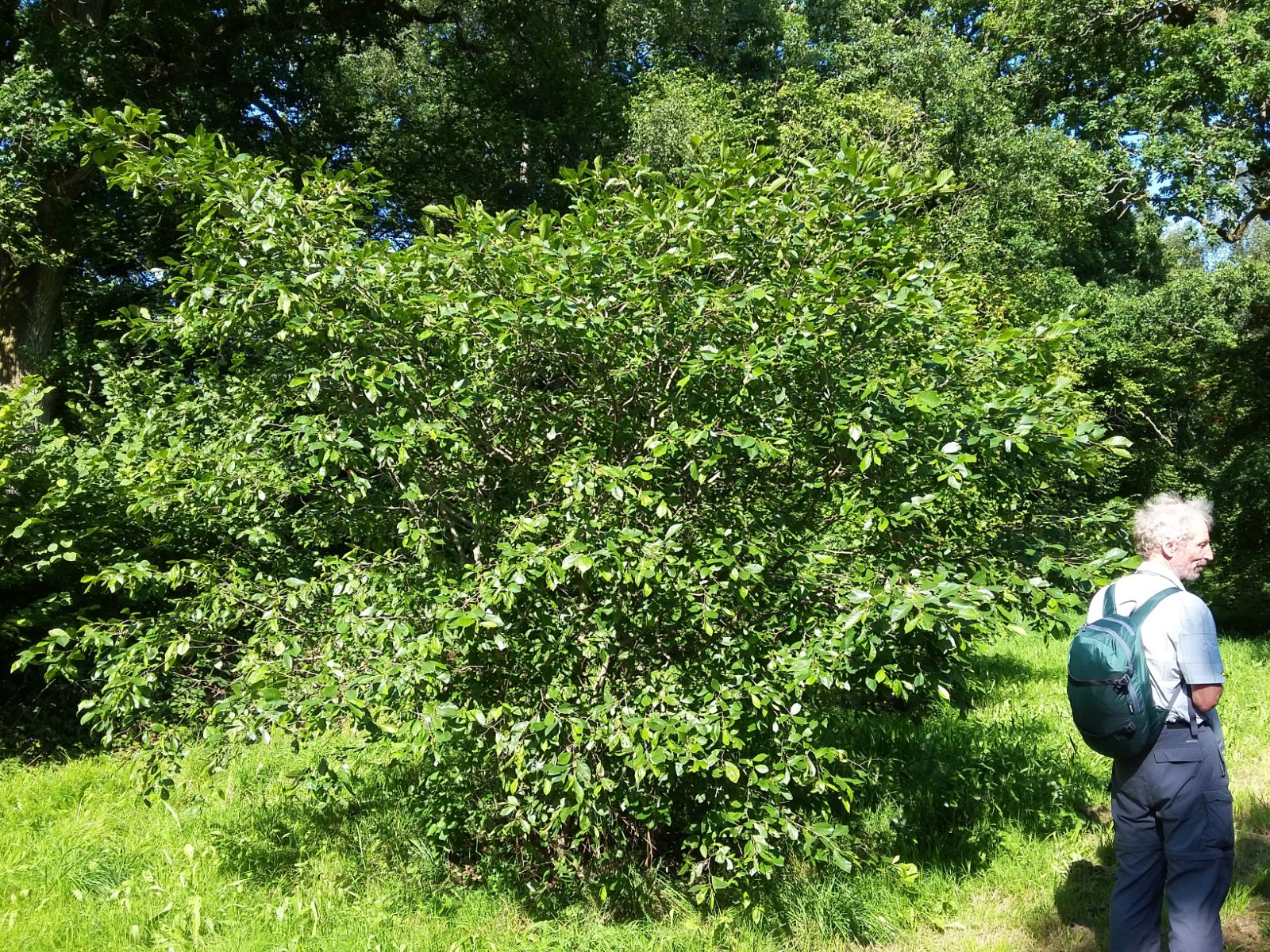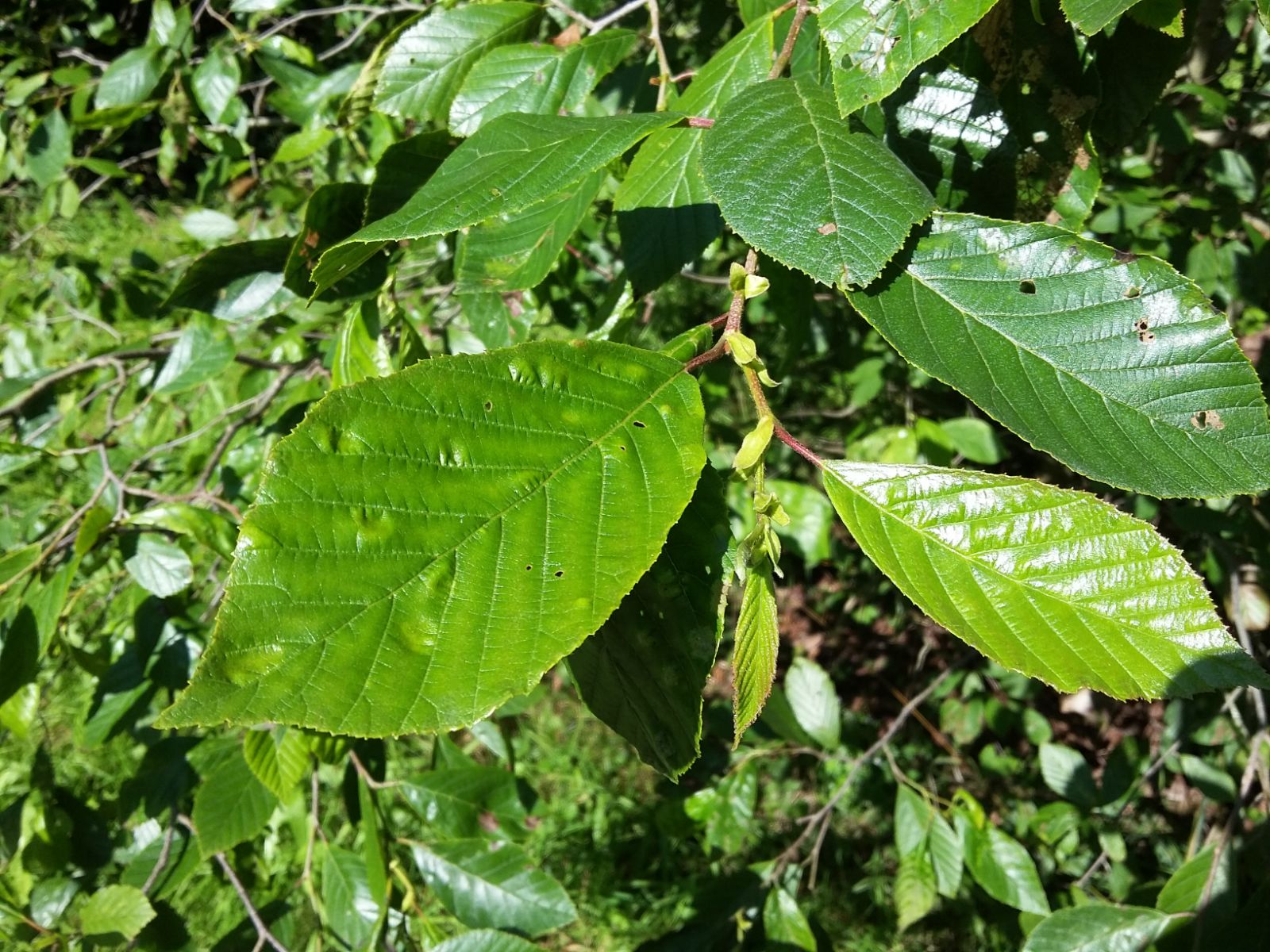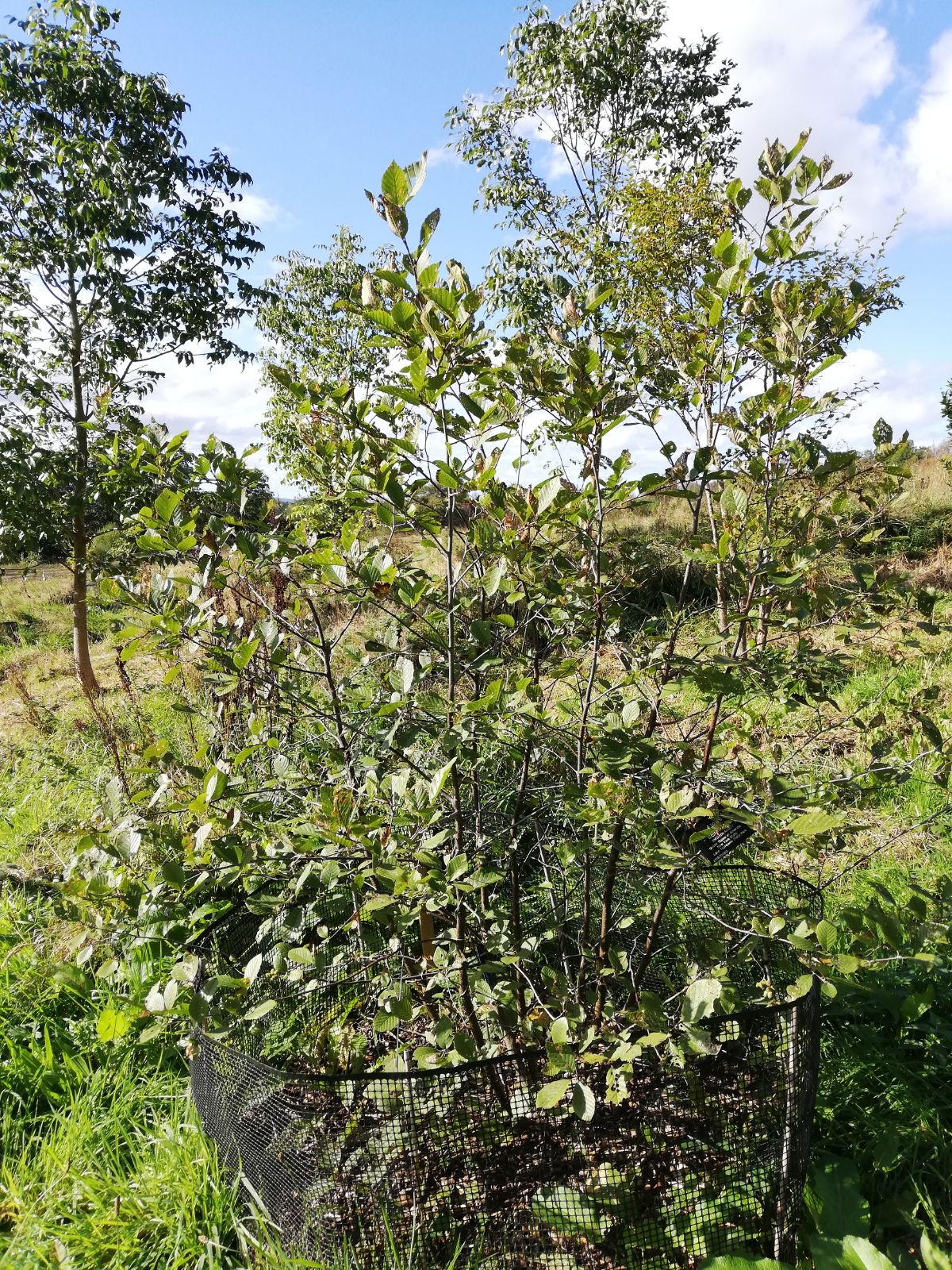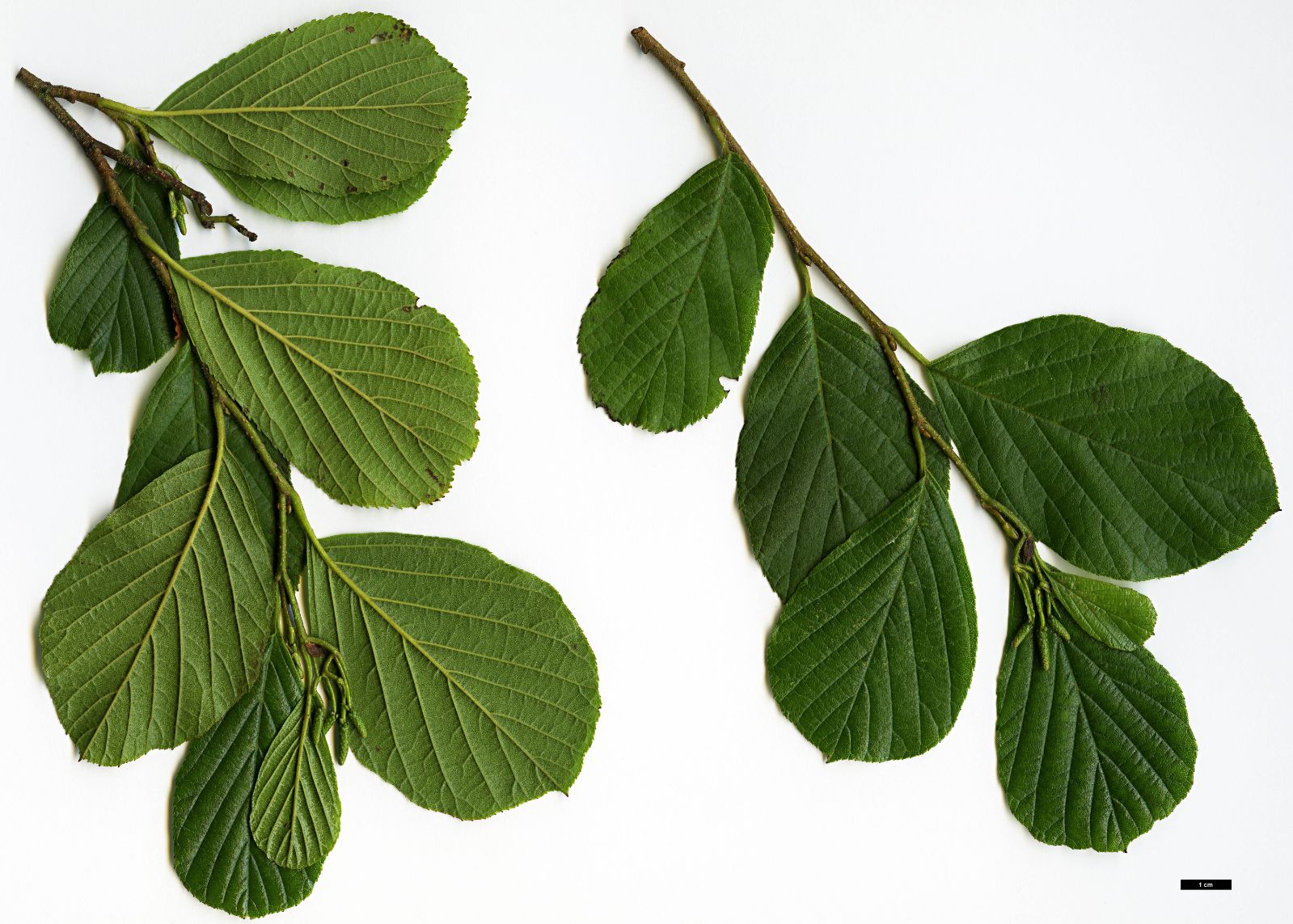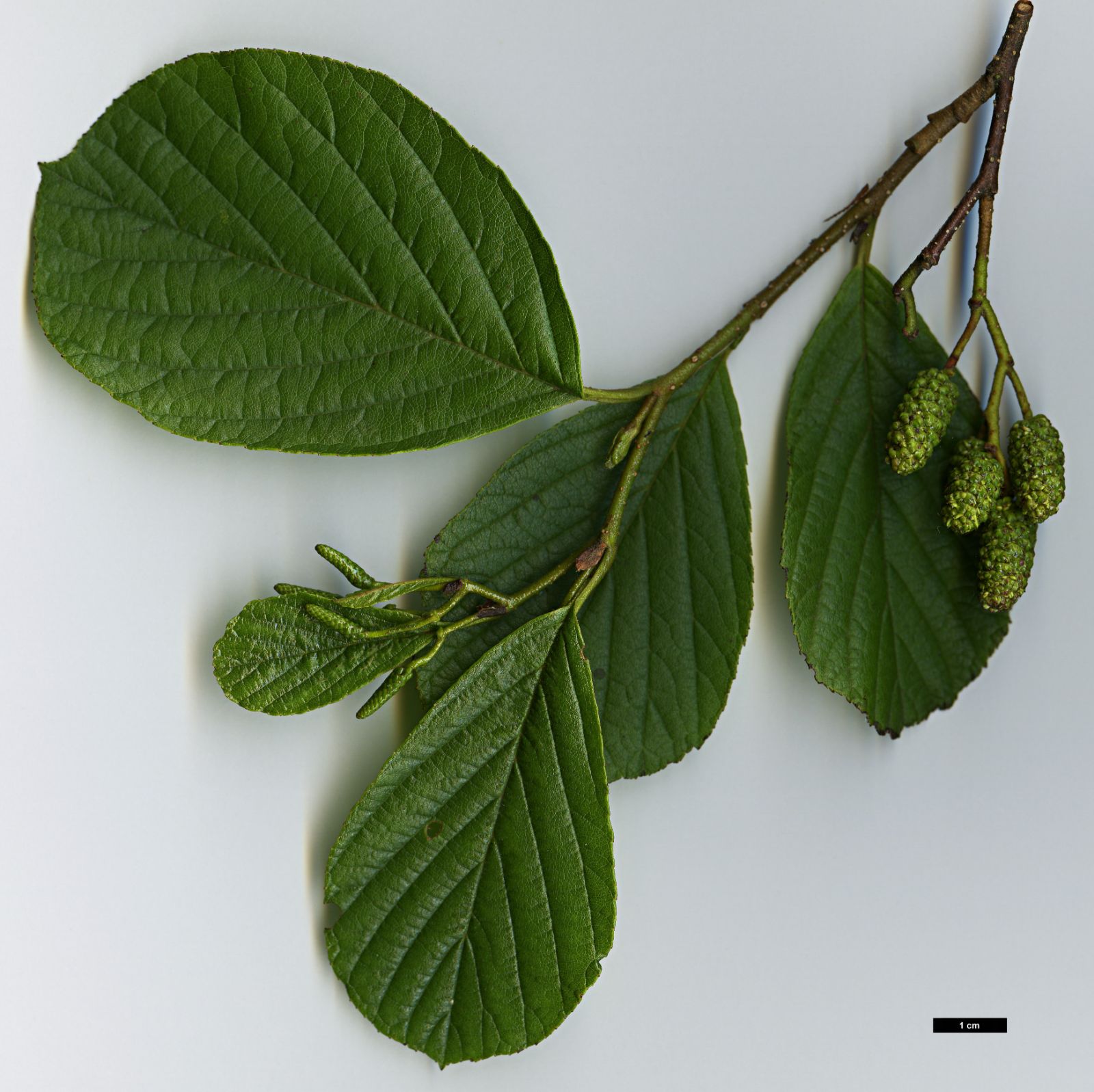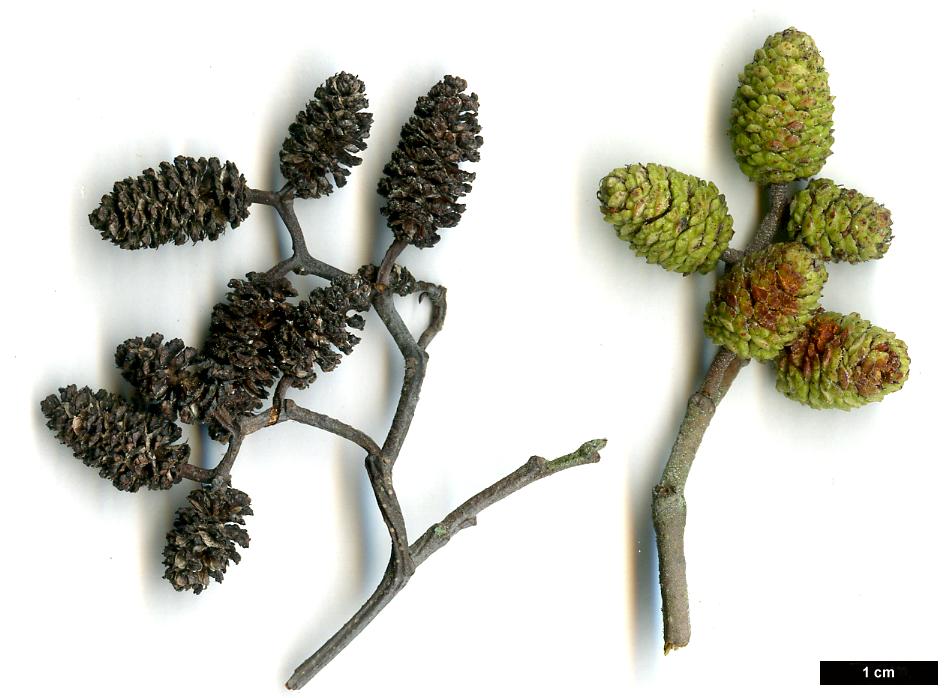Alnus serrulata
Sponsor
Kindly sponsored by
a member of the International Dendrology Society
Credits
Tim Baxter & Hugh A. McAllister (2024)
Recommended citation
Baxter, T. & McAllister, H.A. (2024), 'Alnus serrulata' from the website Trees and Shrubs Online (treesandshrubsonline.
Genus
- Alnus
- Subgen. Alnus, Sect. Glutinosae
Common Names
- Smooth Alder
- Hazel Alder
Synonyms
- Alnus americana K. Koch
- Alnus glutinosa var. autumnalis Kuntze
- Alnus latifolia Desf.
- Alnus rugosa var. obtusifolia (Regel) H.J.P. Winkl.
- Betula serrulata Aiton
Other taxa in genus
- Alnus acuminata
- Alnus alnobetula
- Alnus betulifolia
- Alnus cordata
- Alnus cremastogyne
- Alnus djavanshirii
- Alnus dolichocarpa
- Alnus × elliptica
- Alnus × fallacina
- Alnus fauriei
- Alnus ferdinandi-coburgii
- Alnus firma
- Alnus formosana
- Alnus glutinosa
- Alnus hirsuta
- Alnus incana
- Alnus inokumae
- Alnus japonica
- Alnus jorullensis
- Alnus lanata
- Alnus lusitanica
- Alnus maritima
- Alnus matsumurae
- Alnus × mayrii
- Alnus nepalensis
- Alnus nitida
- Alnus oblongifolia
- Alnus orientalis
- Alnus pendula
- Alnus rhombifolia
- Alnus rohlenae
- Alnus rubra
- Alnus serrulatoides
- Alnus sieboldiana
- Alnus 'Sipkes'
- Alnus × spaethii
- Alnus subcordata
- Alnus trabeculosa
Multi-stemmed shrub to 10 m. Bark light grey, ± smooth. Twigs light to dark brown, often glaucous. Buds elliptic-obovoid, 3–6 mm, apex rounded at the apex, 2 scales, stalk 1.5–3 mm, pubescent. Leaves elliptic to obovate, 4–14.5 cm × 2–7.5 cm, apex obtuse to rounded, base broadly cuneate, adaxially mid to dark green, abaxially light green, matt, leathery, margin regularly serrulate, flat to slightly revolute, adaxially glabrous to sparsely pubescent, abaxially glabrous to villous, veins pubescent to tomentose, craspedodromous, 6–10 pairs of lateral veins. Petioles 6–15 mm, glabrous, pubescent to tomentose. Stipules elliptic to obovate, the apex obtuse to rounded, 2–6 × 1–3 mm, villous. Pistillate inflorescences in racemose clusters of 2–5, produced during the previous growing season, erect, ovate to elliptic, at anthesis 3–6 × 2 mm, peduncles 0.5–2 mm. Staminate catkins in terminal racemose clusters of 3–5 above the staminate, on divergent pendent peduncles, produced during the previous growing season, at anthesis 30–85 × 4–10 mm, on peduncles 1.5–8 mm. Fruit ovoid to elliptic, 10–20 × 7–12 mm, bracts woody, 3–5 mm long, terminal lobe acute and extended. Seed narrowly winged, brown, elliptic-obovate, 2–3 × 2 mm, styles persistent. Flowering March-April. Diploid, 2n=28. (Furlow 1979; Baxter, pers. obs.).
Distribution Canada E United States E
Habitat Stream banks, ditches, edges of sloughs, swampy fields and bogs, and lakeshores. Sea level up to 800 m asl.
USDA Hardiness Zone 4-9
RHS Hardiness Rating H5
Conservation status Least concern (LC)
Smooth or Hazel Alder is a shrubby species of the coastal plain of eastern North America, from Nova Scotia to Illinois and Missouri south to eastern Texas and northern Florida. Disjunct populations also occur on sand dunes towards the southern end of Lake Michigan. It is common to abundant in a range of wet and seasonally flooded habitats including along streams, lakes and rivers, in marshes, depressions in marshy meadows and along ditches. It is an important component of riverine and marshy ecosystems, providing food for aphids, butterflies and nesting birds. This is a light-demanding species which can tolerate poor and waterlogged soil (Furlow 1979). It was used by Native Americans for a range of medicinal uses including as a purgative or emetic, for eye trouble and in treating toothache.
Alnus serrulata has sometimes been confused with A. incana subsp. rugosa, often as A. rugosa (see, for example Flora Europaea – Tutin et al. 1968). The two are easily distinguished as A. serrulata is shrubbier, has leaves with small even toothing, rarely lobed, and broadest towards the middle or apex (elliptic to obovate), the buds obovate, and the branching of the male catkins is erect to semi-erect and more or less straight. A. incana subsp. rugosa forms a small, often multi-stemmed tree with more coarsely and unevenly toothed leaves that are often lobed, and broadest towards the middle to base (elliptic to ovate) and the peduncles on the male inflorescences are curved (typically pendulous but sometimes semi-erect). The two species are sympatric in the north of their range and hybrids are common and can be almost indistinguishable.
Alnus serrulata remains an uncommon tree in cultivation, both in North America and Europe, largely due to its unassuming appearance and taxonomic confusion. In Europe plants are found at Ness, Westonbirt, Kew, Edinburgh and the Sir Harold Hillier Gardens. The only sizeable plant is at Maurice Foster’s arboretum at White House Farm, Kent, 6 m tall in 2019 (Tree Register 2022). It has some use as a shrubby addition to wet areas and streamsides, and is useful as a cover plant or for screening. It is easily cultivated from seed but one should be alert for potential hybrids, especially when dealing with plants of unknown provenance. It is slower growing than many alders but may make up to 1 m annual growth under ideal conditions. At Ness, plants are surprisingly drought-tolerant and have grown into 3 m shrubs within 7 years in sub-optimal conditions. Unfortunately, this species is susceptible to Alder Leaf Beetle and even well-grown plants suffer badly.

